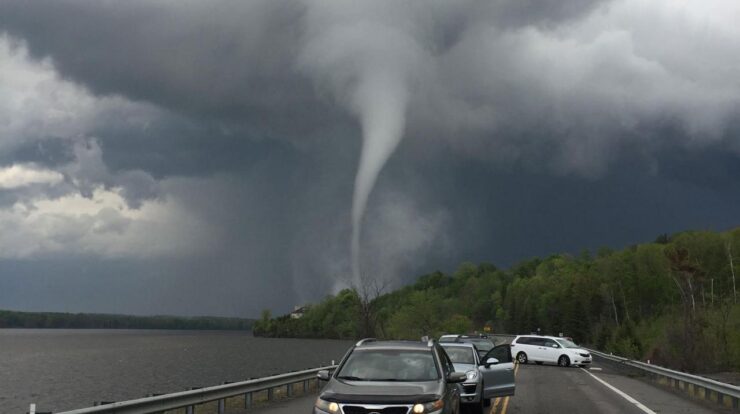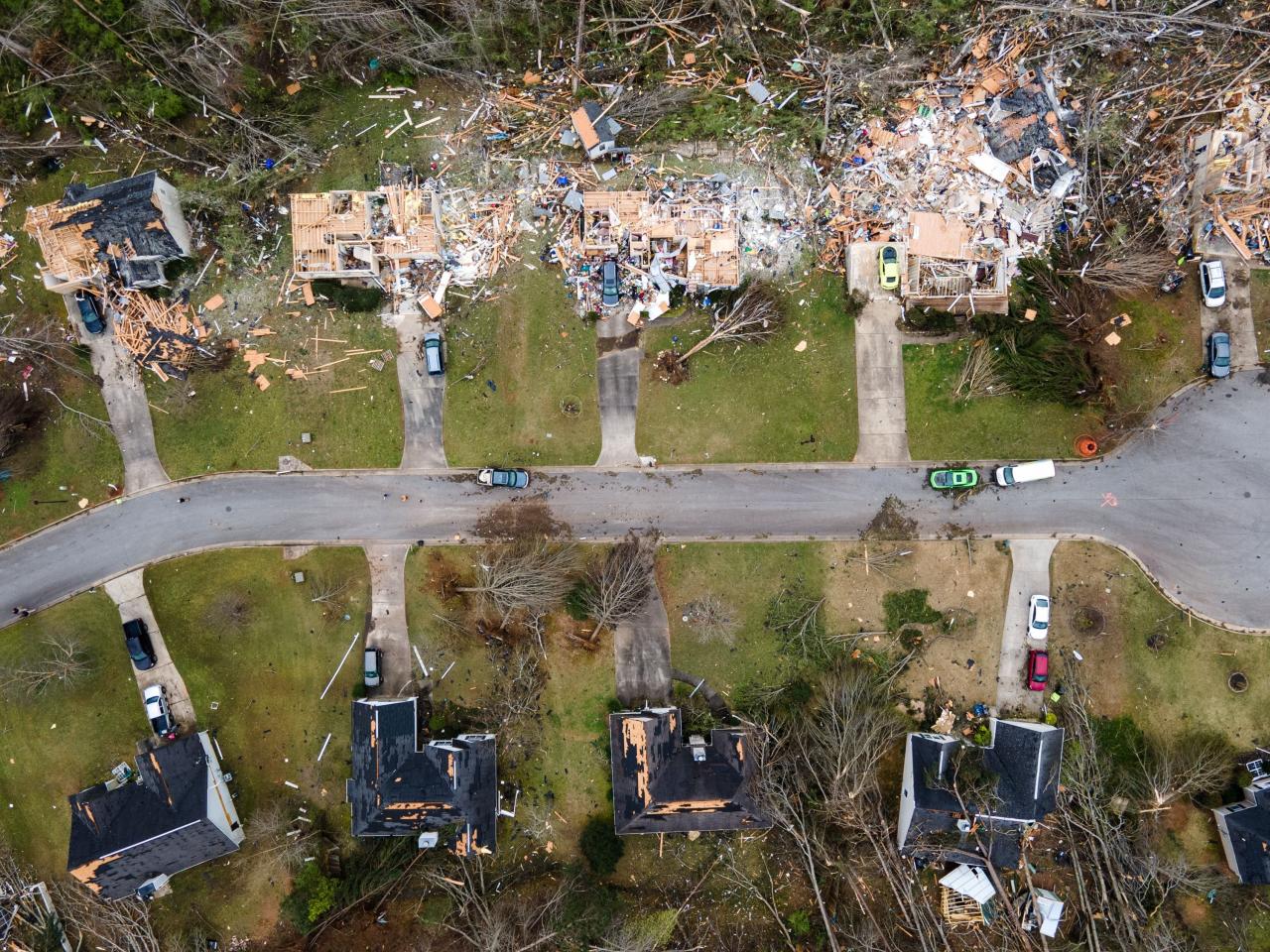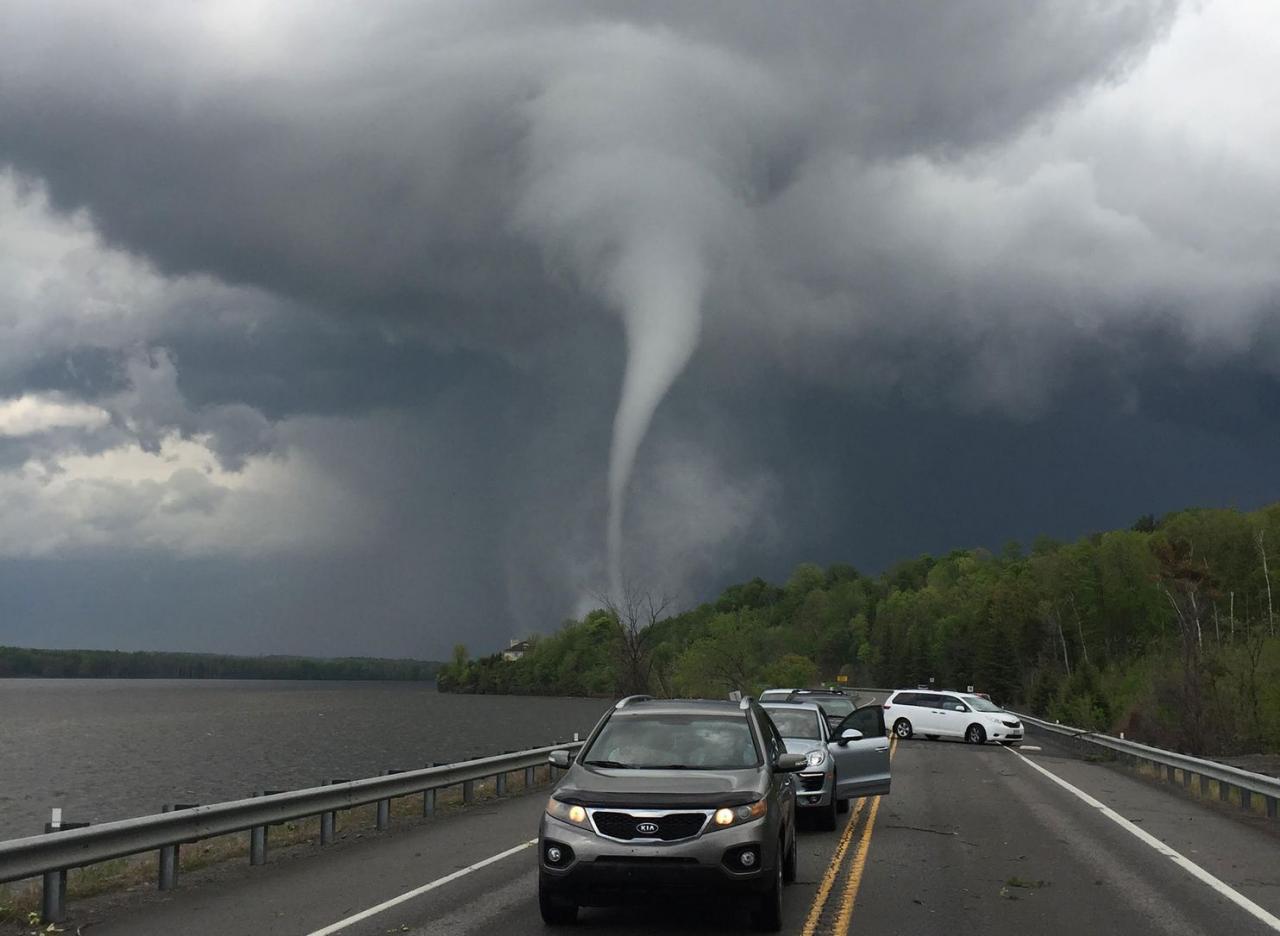
Tornadoes today are a growing concern worldwide, posing significant threats to communities and infrastructure. As weather patterns become increasingly unpredictable, it’s crucial to enhance our understanding of these powerful and destructive forces of nature.
In this comprehensive guide, we explore the formation, characteristics, and impacts of tornadoes, empowering you with knowledge to stay informed and prepared.
Tornado Safety and Preparedness: Tornadoes Today
Tornadoes can be deadly, but being prepared can help save lives. Stay informed about tornado warnings, create a tornado safety plan, and have emergency supplies ready.
Tornado Safety Plan
- Identify a safe place in your home or workplace, such as a basement or interior room on the lowest floor.
- Practice tornado drills with your family or coworkers.
- Have an emergency kit with water, food, a first-aid kit, and a battery-powered radio.
Emergency Supplies and Evacuation Routes
- Keep a supply of non-perishable food and water on hand.
- Identify evacuation routes from your home and workplace.
- Stay informed about weather forecasts and warnings.
Tornado Formation and Characteristics

Tornadoes form when warm, moist air from the Gulf of Mexico meets cold, dry air from the north. These conditions create instability in the atmosphere, leading to the formation of thunderstorms.
Types of Tornadoes
- Weak tornadoes (EF0-EF1):Wind speeds up to 110 mph, can cause damage to trees and structures.
- Strong tornadoes (EF2-EF3):Wind speeds up to 165 mph, can cause significant damage to structures and infrastructure.
- Violent tornadoes (EF4-EF5):Wind speeds over 200 mph, can cause catastrophic damage and loss of life.
Tornado Anatomy
| Feature | Description |
|---|---|
| Funnel cloud | A rotating column of air that extends from the base of a thunderstorm to the ground. |
| Condensation funnel | A visible condensation funnel that forms within the tornado. |
| Debris cloud | A cloud of dust and debris that surrounds the tornado. |
Tornado Forecasting and Tracking
Tornadoes are difficult to predict, but meteorologists use a variety of tools to track and forecast them.
Weather Radar
Weather radar can detect the rotation of air within thunderstorms, indicating the potential for a tornado.
Satellite Imagery
Satellite imagery can help meteorologists identify areas of instability and thunderstorm development.
Technology Advancements, Tornadoes today
Advances in technology have improved tornado forecasting and warning systems, allowing meteorologists to issue more accurate and timely warnings.
Tornado Impacts and Damage
Tornadoes can cause a variety of damage to property and infrastructure.
Property Damage
- Structural damage:Tornadoes can damage or destroy buildings, bridges, and other structures.
- Tree damage:Tornadoes can uproot trees, causing power outages and damage to property.
- Vehicle damage:Tornadoes can lift and toss vehicles, causing serious damage or loss of life.
Infrastructure Damage
- Power outages:Tornadoes can damage power lines, causing widespread power outages.
- Water main breaks:Tornadoes can damage water mains, causing flooding and water shortages.
- Transportation disruptions:Tornadoes can damage roads and bridges, disrupting transportation.
Historical Tornadoes
Some of the most destructive tornadoes in history include:
- Tri-State Tornado (1925):Killed 695 people and injured over 2,000.
- Oklahoma City Tornado (1995):Killed 168 people and caused $1.5 billion in damage.
- Joplin Tornado (2011):Killed 161 people and caused $2.8 billion in damage.
Tornado Climatology and Geography

Tornadoes occur worldwide, but they are most common in the Great Plains of the United States.
Geographical Distribution
Tornadoes can occur anywhere in the world, but they are most common in:
- Great Plains of the United States
- Tornado Alley (central United States)
- Southeastern United States
- Northern Argentina
- Eastern Australia
Seasonal and Temporal Patterns
Tornadoes are most common in the spring and summer months, and they tend to occur in the afternoon and evening.
Vulnerable Areas
Areas that are particularly vulnerable to tornadoes include:
- Mobile home parks
- Rural areas
- Areas with large trees
- Areas with hills or mountains
Tornado Research and Mitigation
Ongoing research efforts are aimed at improving tornado forecasting and warning systems.
Storm Chasers
Storm chasers play a vital role in tornado research by collecting data and providing real-time observations.
Mitigation Strategies
Successful tornado mitigation strategies include:
- Tornado shelters:Underground or above-ground structures designed to withstand tornadoes.
- Tornado warning systems:Systems that provide early warnings of tornadoes.
- Building codes:Building codes that require tornado-resistant construction.
Concluding Remarks
Through advancements in forecasting and mitigation strategies, we can minimize the risks associated with tornadoes. By staying vigilant, adhering to safety guidelines, and supporting research initiatives, we can work together to build more resilient communities and mitigate the devastating impacts of these natural hazards.
Expert Answers
What are the warning signs of a tornado?
Loud roaring or whistling sound, rotating funnel cloud, debris swirling in the air.
What should I do if I see a tornado?
Take cover immediately in a sturdy building, basement, or underground shelter. Stay away from windows and doors.
How can I prepare for a tornado?
Develop a safety plan, identify shelter locations, and have an emergency kit ready with food, water, and first aid supplies.





